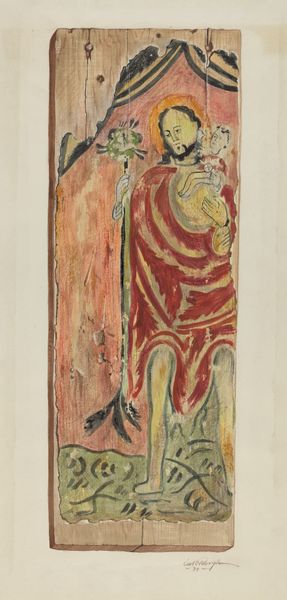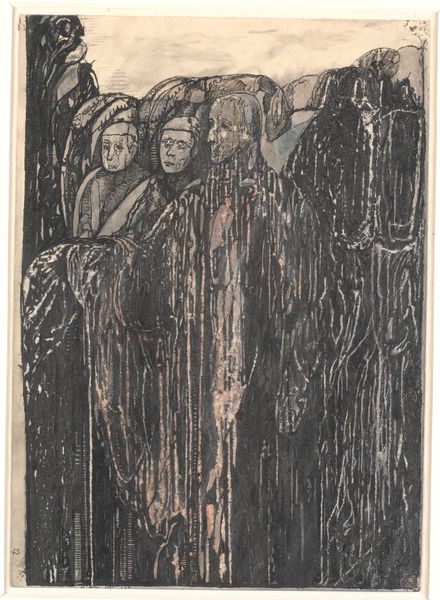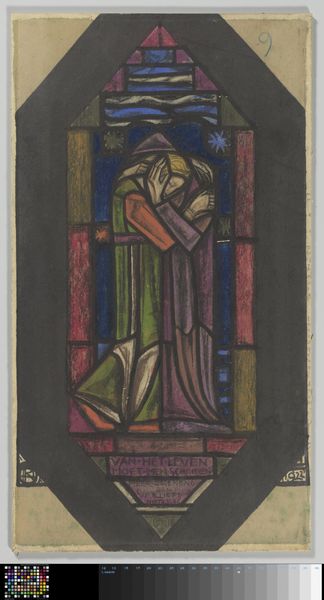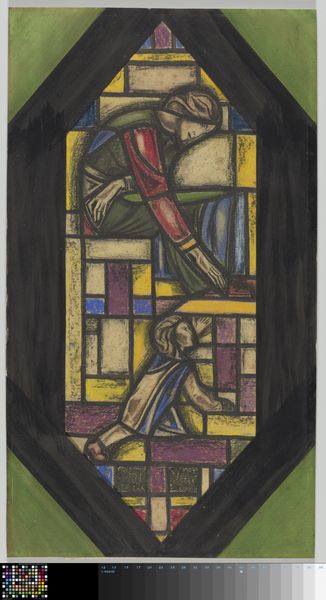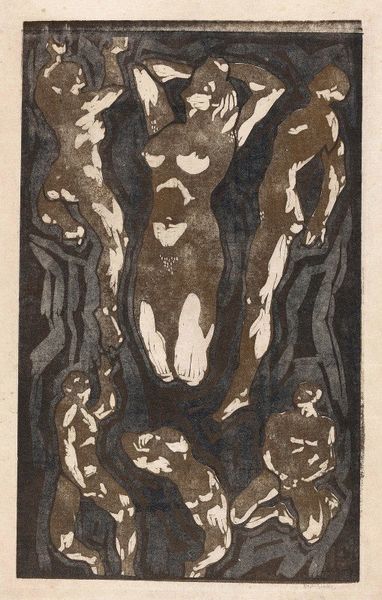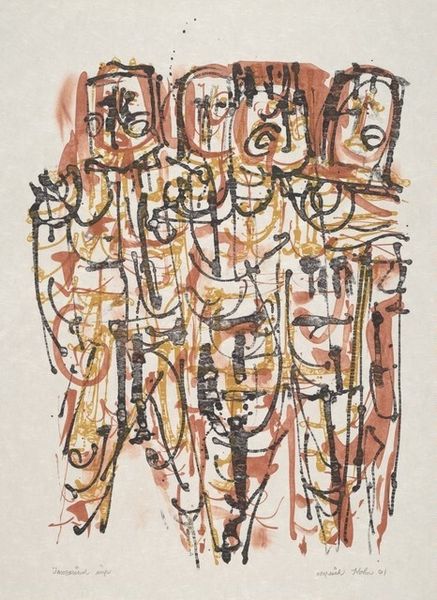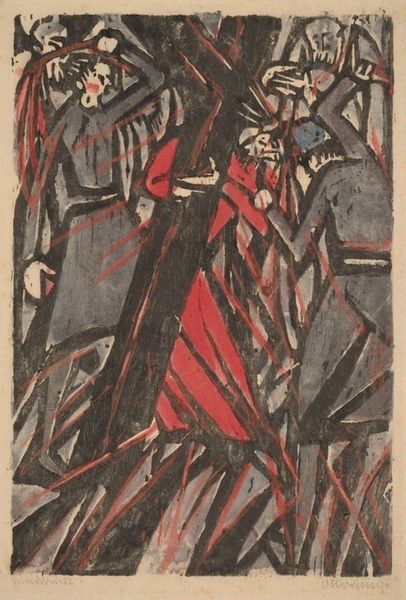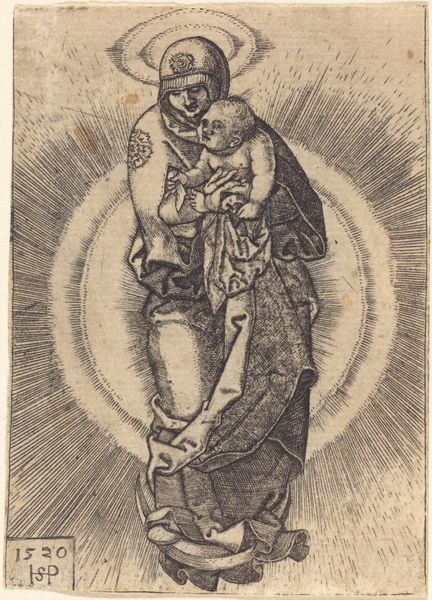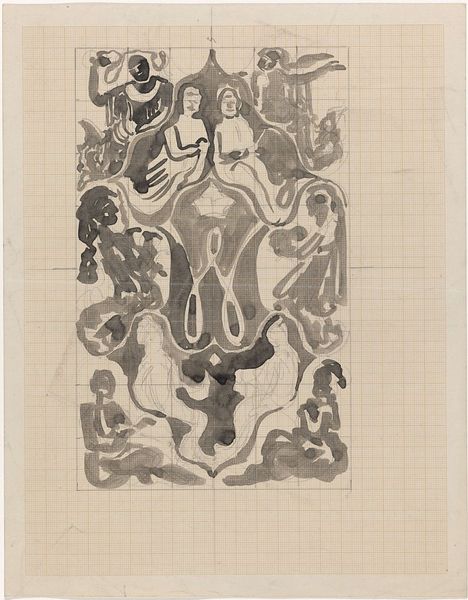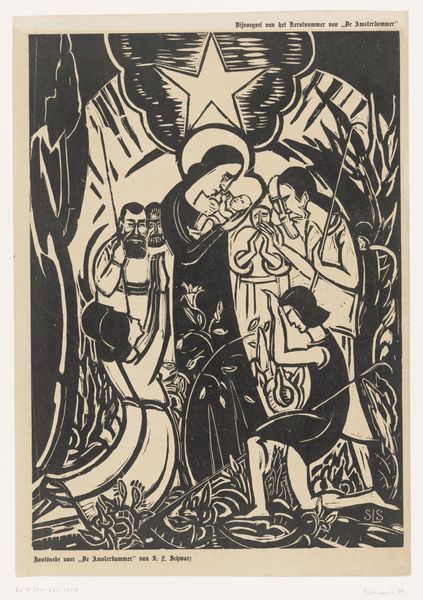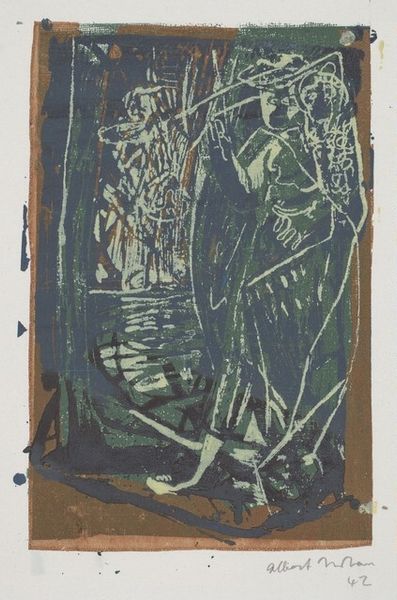
drawing, paper, watercolor, ink
#
drawing
#
art-nouveau
#
ink painting
#
figuration
#
paper
#
watercolor
#
ink
#
watercolour illustration
#
watercolor
Dimensions: height 252 mm, width 197 mm
Copyright: Rijks Museum: Open Domain
Curator: Here we have "Decoratief ontwerp met bovenaan twee herauten," a decorative design featuring two heralds at the top by Carel Adolph Lion Cachet. It dates roughly from 1874 to 1945, and employs ink, watercolor and drawing on paper. Editor: My initial impression is one of obscured figures and vibrant materiality—the red and black wash drawing feels somehow urgent, even with the stylized heralds and key design. Curator: Yes, let's consider that. These heralds, traditionally messengers of significant news, are rendered here as figures within what reads as almost oppressive frames. Is there perhaps a subversive commentary here? The visual tension resonates with feminist theory challenging the power structures embodied by heraldic figures. Editor: I agree. Cachet’s use of watercolor, ink, and paper speaks volumes about accessibility and process. Compared to traditional heraldic display employing precious metals or oil paints, the materiality here suggests an intention to democratize, to make the symbols and messages accessible to a wider audience. What does this mean? Curator: The inclusion of various grouped figures creates a sense of community viewing these heralded messages. What socio-political shifts might Cachet be responding to in that era of significant industrial and colonial expansion? Editor: I’d also ask us to consider Cachet's use of bold strokes and layering, particularly evident in the lower figures. This approach isn't just aesthetic; it reflects a physical engagement with the material that implies labor. Was Cachet influenced by the Arts and Crafts movement, where process and hand-making were valorized as acts of resistance against mass production? Curator: That adds depth. These abstracted figures suggest an attempt to grapple with notions of collective identity and voice, but are we to read the obfuscation as commentary on power? Are these messages for all? Or are they deliberately excluding certain groups? The use of heralds typically communicates hierarchy. Editor: So interesting to view through those lenses of production and consumption, and question whether Cachet is deliberately muddying the lines between mass-produced symbolism and individualized craft. It really reframes how we might approach heraldry and message as not solely authoritarian, but perhaps as objects and ideas ripe for reinterpretation. Curator: Exactly! Exploring his creative decisions and this art’s place in cultural movements helps contextualize the visual vocabulary here—a truly stimulating exercise of connecting historical context with art making, opening up our perceptions around identity in design. Editor: And questioning, also, where labor, materials and making fit within broader social messages in the era, allowing us a clearer view into the artwork's original cultural dynamics!
Comments
No comments
Be the first to comment and join the conversation on the ultimate creative platform.
